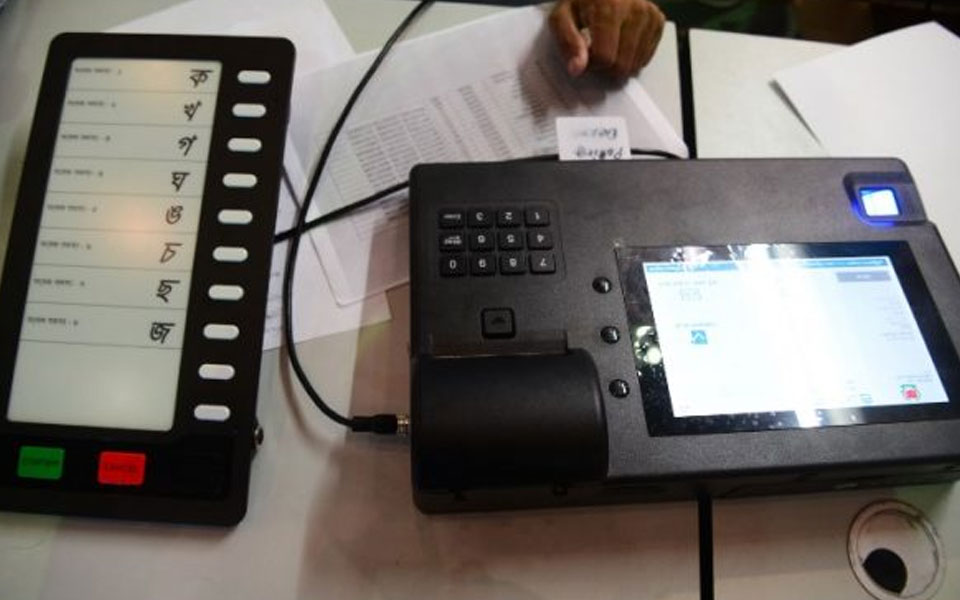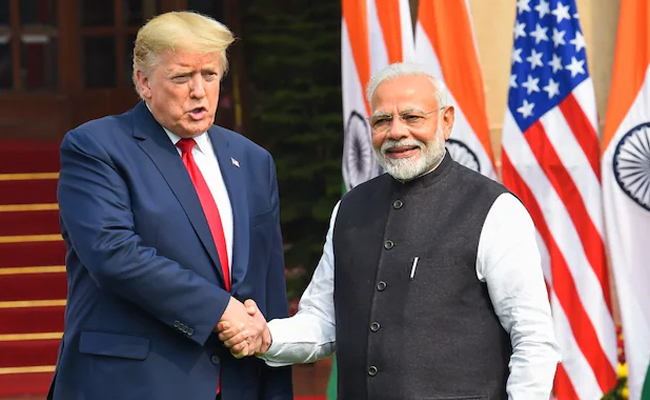Dhaka, Dec 30 : Bangladesh Sunday deployed electronic voting machines for the first time in a general election, though only on a limited scale, a move which received mixed responses from the voters amid reports of glitches in some booths.
Out of the 299 parliamentary constituencies that went to polls, six saw the use of electronic voting machines (EVMs), a regular feature in neighbouring India since decades ago.
Voting for the 11th national election began with the machines being used in the six seats selected through lottery. These are: Dhaka-6, Dhaka-13, Chattogram-9, Rangpur-3, Khulna-2 and Satkhira-2. The six seats comprises over 2.1 million voters. The results from these six seats could be announced within hours after the voting ends, Bangladeshi media reported.
Electronic voting machines created problems across different voting centres in Dhaka-13 and Dhaka-6, slowing down voting process and leading to long queues, the Daily Star newspaper reported.
Voters in some areas have reported facing trouble when the machines could not recognise their fingerprints, BDnews24.com reported.
Dhaka-13 voter Jagat Dashi Mondol, a septuagenarian, was smiling as she came out of the polling centre at Mohammadpur's Borabo Government Primary School.
When asked about how she felt using an EVM, said, "easy, very easy."
The polling centre's Presiding Officer Jayanta Chandra Deb said he replaced three EVMs when they stopped working.
Nazrul Islam, a retired engineer, said his fingerprint was not matching when he went to vote at the polling centre in Lalmatia Mohila College.
"But I got to vote using my voter ID. It didn't take much time."
Gazi Hossain, a former librarian of Lalmatia Mohila College, was unhappy with the EVM because of the time wasted in trying to match his fingerprint in the machine. "It wasn't matching, so it took more time, that's a problem," he said.
Bimal Chandra, a retired teacher, voted using EVM at the Mohammadpur Chand Community Centre.
"I just pressed two buttons on the EVM. One on the poll symbol, then another on a green button. It takes roughly ten seconds. It takes more time to be marked on the thumb with ink.
"It takes just 20 minutes to count the votes from EVM centres. This is good," said Chandra.
On December 27, the Election Commission organised mock voting at selected polling centres to educate voters on how to use EVMs.
The EVM technology is being used for the first time at the national election level, eight years after being introduced in local government elections in the country.
The machines were first used in the Chittagong City Corporation election of June 2010. However, the Election Commission stopped using the technology in 2015 due to some errors. The machines were later reintroduced in the Rangpur City Corporation election in 2016.
During this year's city corporation polls, EVMs were used in three polling centres in Khulna City Corporation with 10,000 voters; two centres in Sylhet City Corporation with 5,413 voters; 11 centres in Barishal City Corporation with 25,000 voters; and two centres in Rajshahi City Corporation with 3,383 voters, the Daily Star reported.
During the Election Commission's electoral dialogues, most of the 40 registered parties, including the Bangladesh Nationalist Party of former premier Khalida Zia and its allies, opposed the idea of using EVMs in the election.
However, five political parties, including the ruling Awami League of Prime Minister Sheikh Hasina, its allies Workers Party of Bangladesh, Jatiya Samajtantrik Dal faction led by Hasanul Haq Inu and Bangladesher Samyabadi Dal (M-L) and Zaker Party supported the use of EVMs.
The BNP has all along been opposing the EC move, alleging that this might facilitate "the government's plan for election engineering".
The Bangladesh Machine Tools Factory (BMTF) imported parts of the EVMs and assembled them in Bangladesh ahead of the general election, media reports said.
"The EVM fingerprint scanner will be imported from America while Apple will supply the monitors. Other parts of the EVM machine will be imported from different countries," the Dhaka Tribune quoted Brig Gen Mohammad Saidul Islam, director general of the Election Commission's National Identity Registration Wing, as saying in September.
Let the Truth be known. If you read VB and like VB, please be a VB Supporter and Help us deliver the Truth to one and all.
New Delh (PTI) The Congress on Saturday said it is perhaps not very surprising that India is not part of a US-led strategic initiative to build a secure silicon supply chain, given the "sharp downturn" in the Trump-Modi ties, and asserted that it would have been to "our advantage if we had been part of this group".
Congress general secretary in charge of communications Jairam Ramesh took a swipe at Prime Minister Narendra Modi, saying the news of India not being part of the group comes after the PM had enthusiastically posted on social media about a telephone call with his "once-upon-a-time good friend and a recipient of many hugs in Ahmedabad, Houston, and Washington DC".
In a lengthy post on X, Ramesh said, "According to some news reports, the US has excluded India from a nine-nation initiative it has launched to reduce Chinese control on high-tech supply chains. The agreement is called Pax Silica, clearly as a counter to Pax Sinica. The nations included (for the moment at least) are the US, Japan, the Republic of Korea, Singapore, the Netherlands, the United Kingdom, Israel, the United Arab Emirates, and Australia."
"Given the sharp downturn in the Trump-Modi ties since May 10th, 2025, it is perhaps not very surprising that India has not been included. Undoubtedly, it would have been to our advantage if we had been part of this group."
"This news comes a day after the PM had enthusiastically posted on his telephone call with his once-upon-a-time good friend and a recipient of many hugs in Ahmedabad, Houston, and Washington DC," the Congress leader asserted.
The new US-led strategic initiative, rooted in deep cooperation with trusted allies, has been launched to build a secure and innovation-driven silicon supply chain.
According to the US State Department, the initiative called 'Pax Silica' aims to reduce coercive dependencies, protect the materials and capabilities foundational to artificial intelligence (AI), and ensure aligned nations can develop and deploy transformative technologies at scale.
The initiative includes Japan, South Korea, Singapore, the Netherlands, the United Kingdom, Israel, the United Arab Emirates, and Australia. With the exception of India, all other QUAD countries -- Japan, Australia and the US -- are part of the new initiative.
New Delhi will host the India-AI Impact Summit 2026 on February 19-20, focusing on the principles of 'People, Planet, and Progress'. The summit, announced by Prime Minister Narendra Modi at the France AI Action Summit, will be the first-ever global AI summit hosted in the Global South.
Prime Minister Modi and US President Trump on Thursday discussed ways to sustain momentum in the bilateral economic partnership in a phone conversation amid signs of the two sides inching closer to firming up a much-awaited trade deal.
The phone call between the two leaders came on a day Indian and American negotiators concluded two-day talks on the proposed bilateral trade agreement that is expected to provide relief to India from the Trump administration's whopping 50 per cent tariffs on Indian goods.
In a social media post, Modi had described the conversation as "warm and engaging".
"We reviewed the progress in our bilateral relations and discussed regional and international developments. India and the US will continue to work together for global peace, stability and prosperity," Modi had said without making any reference to trade ties.





